The 15 Most Expensive Housing Markets in the US: Real Estate with the Highest Average Home Prices
The most expensive housing markets in the U.S. have an average home price almost three times the national average.


Donna LeValley
Home prices may have peaked in the summer of 2022, but the most expensive housing markets in the U.S. are still shockingly pricey.
The S&P CoreLogic Case-Shiller U.S. National Home Price NSA Index is up 3.75% since April of last year. The 20-city index, which measures only the very largest metro housing markets, is up 4.33% over the same time frame.
Both indexes are still up about 5.61% and 5.48% respectively over the past three years, however, and experts see mounting evidence that the recent increase in home prices may already be coming to an end.
After eight months of steadily increasing housing prices in the U.S., price growth has decreased for the third month in a row according to the Case-Shiller U.S. National Home Price NSA Index.
The bottom line is that despite some recent relief, the most expensive housing markets in the U.S. remain exceedingly costly by historical standards and they aren't expected to get much cheaper anytime soon.
To determine what average home prices look like on the ground in the nation's most expensive housing markets, we turned to the latest data from the Council for Community and Economic Research (C2ER). The C2ER cost of living index measures prices in 265 urban areas for housing, groceries, utilities, transportation, healthcare, and miscellaneous goods and services (such as getting your hair done or going to a movie).
Inflation has slowed, but home prices are what really stand out. This year the increase slowed greatly. As of October 2024, the average price of a home in the U.S. came to $520,771, according to C2ER, up from $508,666.
Most expensive housing markets in the U.S.
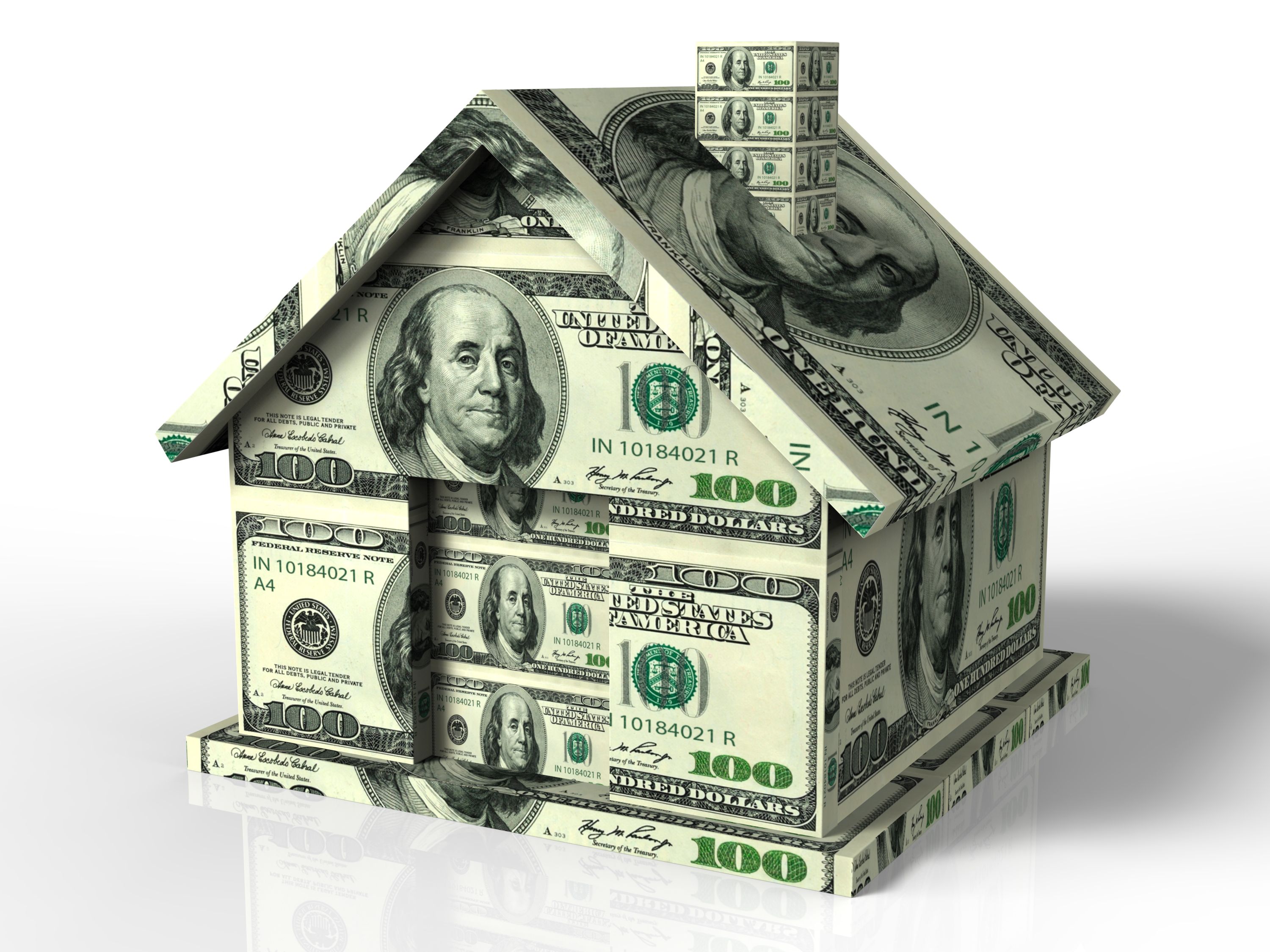
That sticker shock is even more salient in a select set of U.S. cities.
With C2ER's data in hand, we were able to identify the 15 most expensive housing markets in the U.S. — and the premiums home prices command to the national average. (Spoiler alert: the 15 U.S. cities with the highest average home prices have an average home price of $1.39 million, or 2.7 times the national average).
So just how costly do the most expensive housing markets in the U.S. get? Take a closer look at the U.S. cities with the highest average home prices. For good measure, we've also included data on median household incomes, average rents, related housing costs and other pertinent information. (For comparison's sake, here's a look at the most expensive cities in the U.S., where residents are willing to pay more for everything in exchange for the opportunities the cities offer).
Disclaimer
Source: C2ER's Cost of Living Index, 2024 Third Quarter Data, published October 2024. Index data is based on average prices of goods and services collected during the third quarter of 2024, with index values based on the new weights from the 2022 US Consumer Expenditure Survey, BLS. Population data, household incomes, home values, poverty rates and other demographic information are from the U.S. Census Bureau.
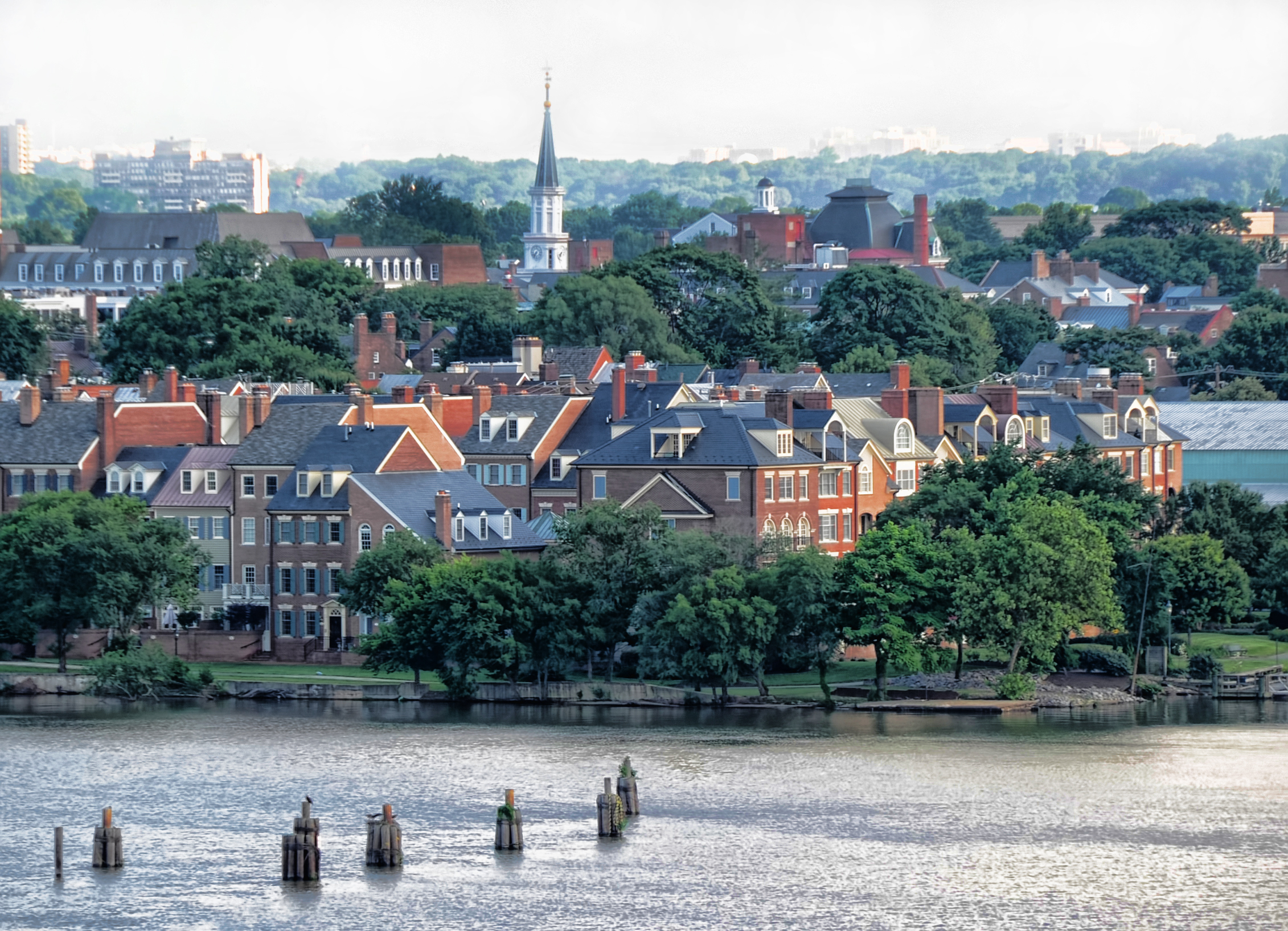
15. Alexandria, Virginia
- City population: 155,230
- Median household income: $110,294 (U.S.: $80,610)
- Average home price: $919,375 (U.S.: $520,771)
- Median home value: $737,900
- Premium to U.S. average: 66.3%
Washington, D.C., and its close-in suburbs like Alexandria are a magnet for the highly educated seeking high-powered jobs. Naturally, many of those ambitious folks are highly paid, and the region's prices reflect that.
Taken as a whole, the official Washington-Arlington-Alexandria, DC-VA-MD-WV Metro Area (pop. 6.3 million) claims an average home value of $574,000, or $163,900 less than Alexandria.
In Alexandria, the average home price of nearly $919,375 is almost 1.8 times the price of the typical American dwelling. Overall housing costs are 66% greater than the U.S. mean, driven partly by average apartment rents of $2,389 a month (vs $1,578 nationally), and average principal and interest payments on mortgages of $4,448 a month (vs the national average of $2,574).
Happily for locals, somewhat more reasonable prices for groceries, healthcare and utilities make the total cost of living in Alexandria "only" 23.1% higher than the U.S. average.
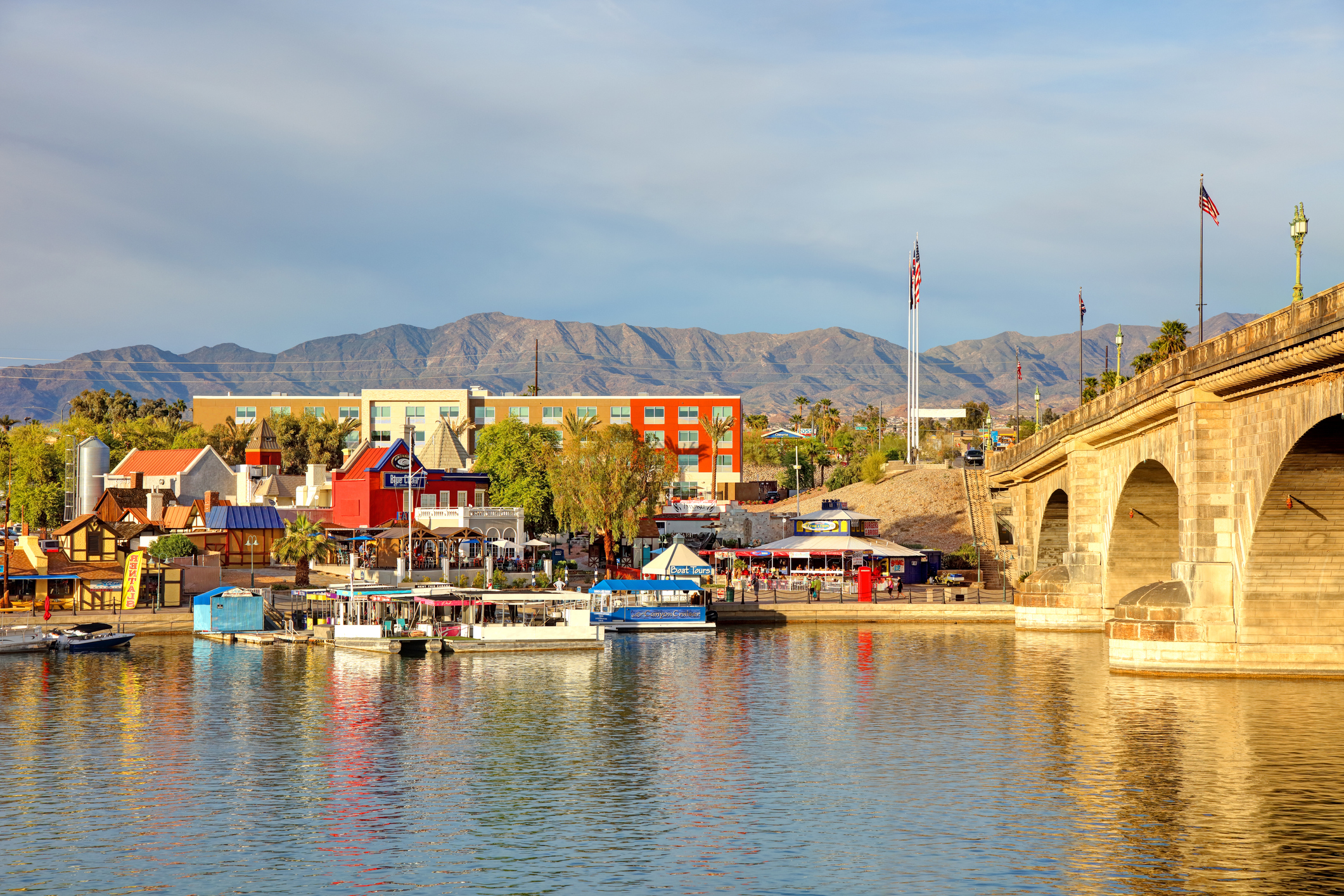
14. Lake Havasu City, Arizona
- City population: 58,037
- Median household income: $66,264
- Average home price: $1,160,347
- Median home value: $411,500
- Premium to U.S. average: 91.5%
Lake Havasu City, located near the state border with California, about halfway between Phoenix and Los Angeles, bills itself as "Arizona's Playground." The fast-growing city has become a haven for tourists, vacationers and especially retirees — and it has the home prices to prove it.
Indeed, the city, which was founded in 1968 and serves as home to The London Bridge, has one of the most expensive housing markets in the U.S.
With a median age of 55.7, retirees have helped bid up the local housing market to the point where the average home price in Lake Havasu City tops $1.1 million.
It's easy to understand the city's allure for folks looking to enjoy their post-working years. Recreational fishing and boating are one draw, thanks to the city's sprawling lake, which is actually a man-made reservoir. Fine dining, the Grace Arts Live Theatre and classic car shows are just a sampling of the year-round activities on tap.
House prices in Lake Havasu City have been cooling off since the summer of 2022. Over the past decade, however, house prices have stabilized and are up by 1.6% year over year, according to Zillow's Home Values Index.
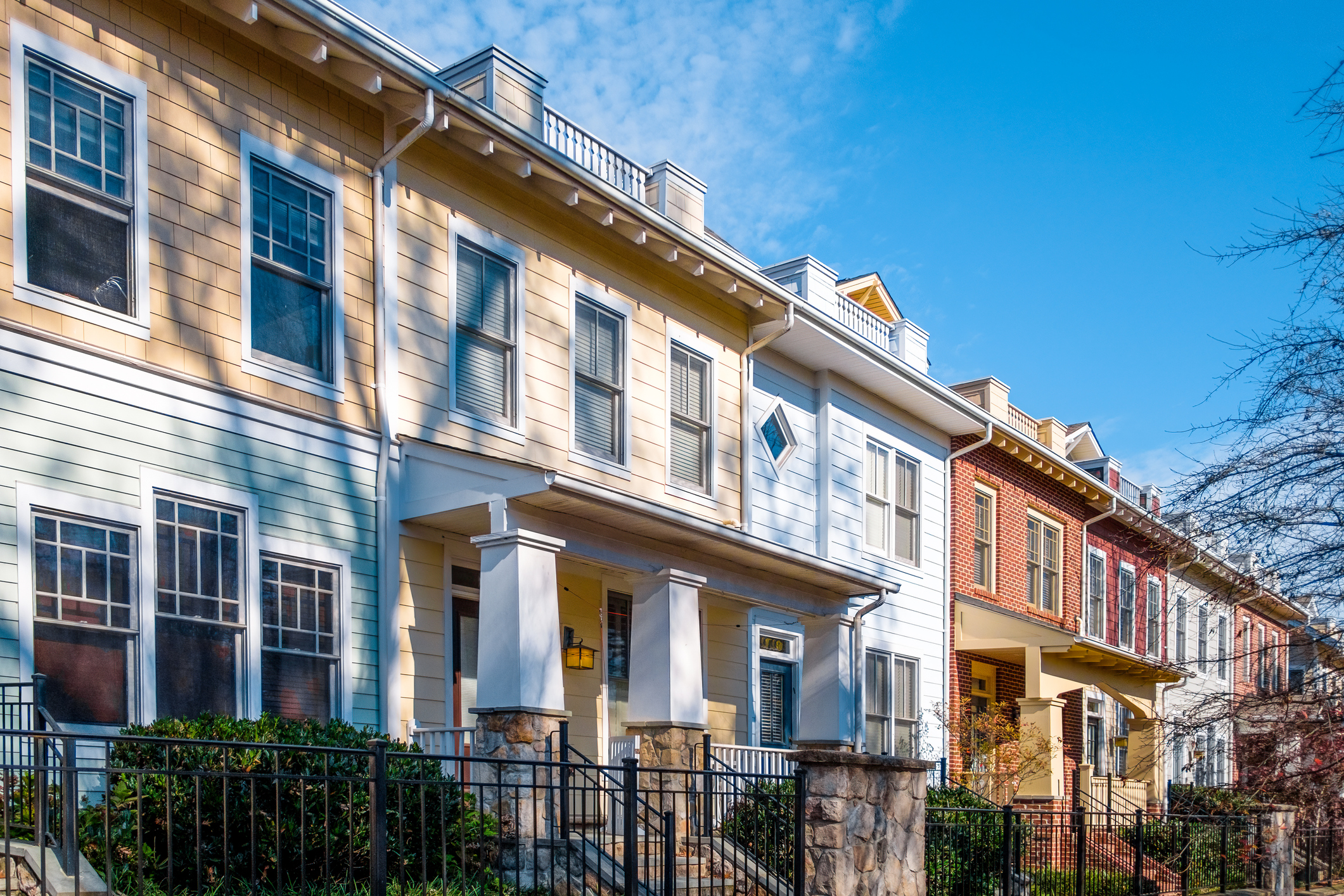
13. Arlington, Virginia
- City population: 234,162
- Median household income: $140,219
- Average home price: $1,094,000
- Median home value: $850,900
- Premium to U.S. average: 106.1%
Washington, D.C., and its close-in suburbs sport some of the highest living costs in the nation. So it should come as no surprise that Arlington makes the top five for highest home prices on our list.
This suburb, home to the Pentagon and Arlington National Cemetery, sits just across the Potomac River from Washington, D.C. As with its neighbors, Arlington attracts ambitious, well-paid people — and has the home prices to prove it.
Housing-related expenses, including rents and mortgages, are more than twice the national average. Locals can thank an average home price of more than $1 million for much of that financial pain. Average principal and interest payments on mortgages top $5,000 a month in Arlington.
On the plus side for residents, Arlington's median household income of nearly $140,219 is among the highest in the U.S. And its per capita income of $87,159 is 1.5 the times the amount for the entire state of Virginia at $48,689.
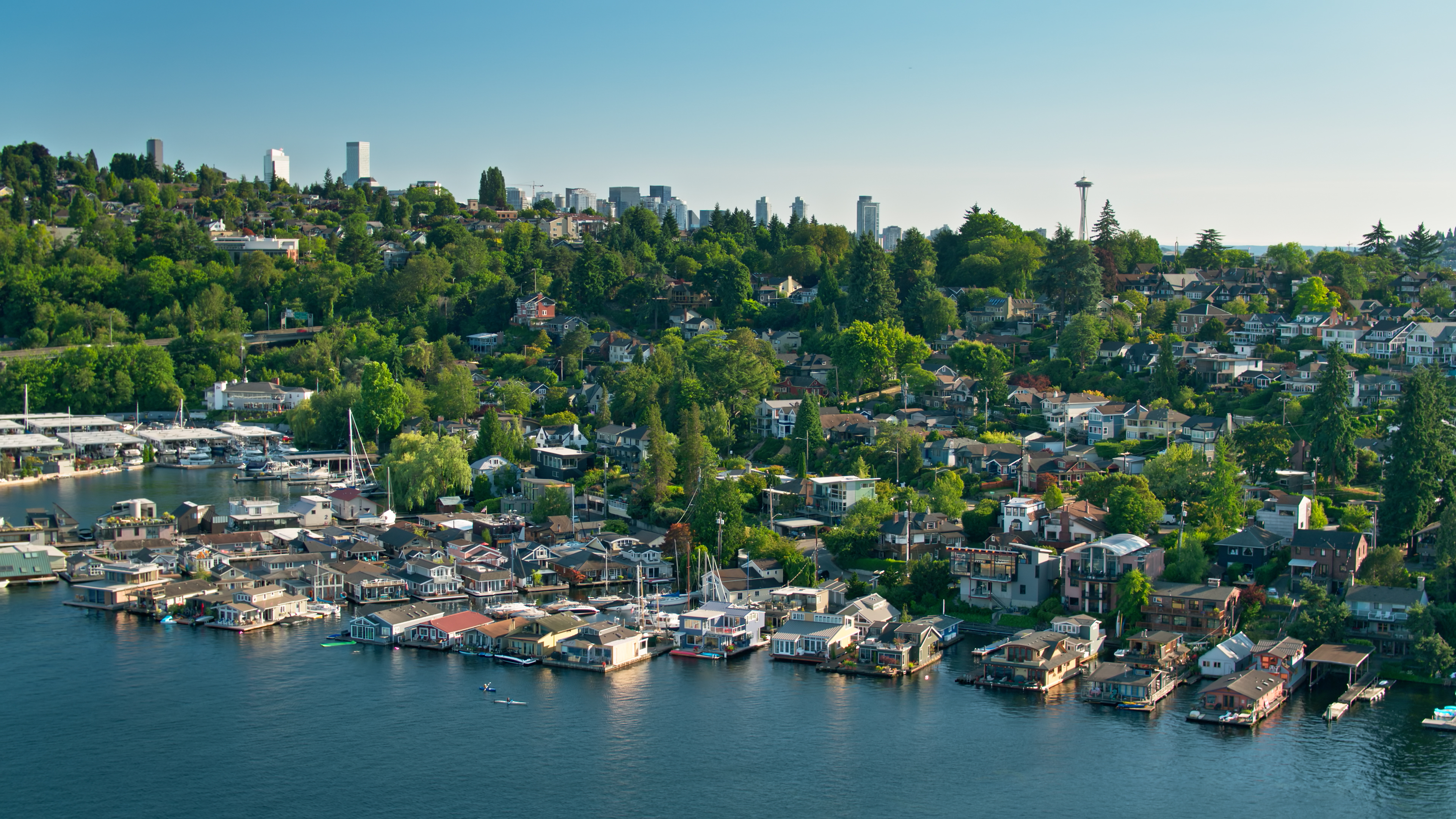
12. Seattle, Washington
- City population: 755,081
- Median household income: $120,608
- Average home price: $1,079,100
- Median home value: $898,600
- Premium to U.S. average: 112.0%
Seattle has long been known for its red-hot housing market, where too little inventory and fierce competition conspired to send home prices skyrocketing for the better part of a decade. After price growth slowed to 3.11% for the three years through 2024, prices have ticked up 5.41% over the past year, according to the S&P 500 CoreLogic Case-Shiller Seattle Home Price NSA Index. But Seattle remains one of the most expensive housing markets in the U.S.
A booming tech scene certainly doesn't help matters. Microsoft (MSFT) and Amazon.com (AMZN) are both based in the Seattle area, as are many smaller high-tech companies. The bottom line is that Seattle's average home price is 107% greater than the national average. Overall housing costs — including rents, mortgages and related expenses — are 112% higher than the U.S. mean.
True, Seattle's high median household income helps homeowners get by, at $39,998 above average, but those elevated home prices nevertheless take quite a bite. At least residents can take some comfort in the fact that their utility bills run only 1.4% more than what the typical American pays.
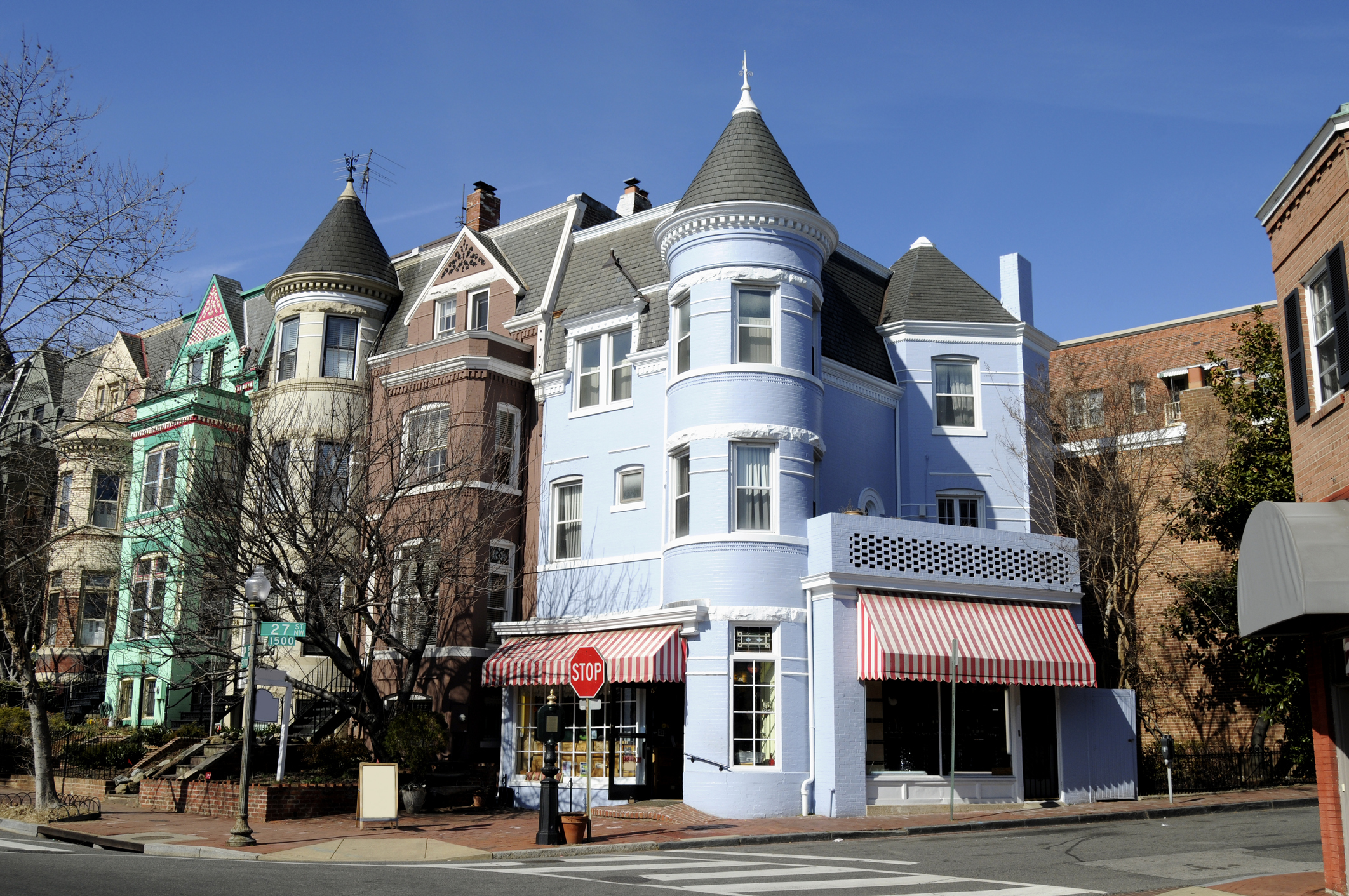
11. Washington, D.C.
- City population: 678,972
- Median household income: $108,210
- Average home price: $1,074,929
- Median home value: $715,500
- Premium to U.S. average: 113.0%
As pricey as its suburbs might be, the nation's capital tops them all when it comes to the most expensive housing markets in the U.S.
An average home price of $1.07 million makes buying a house in Washington, D.C. almost 2.1 times higher than the national average. Comprehensive housing-related costs, including rents, mortgages and insurance, are a burdensome 2.13 times the national average, according to C2ER.
Beyond that, however, Washington is something of a tale of two cities when it comes to living costs. Groceries run about 4.7% above the national average, while utilities are only .5% more expensive. Transportation expenses aren't overly onerous, at slightly less than 8.4% above the U.S. average. A wide-ranging bus and metro system makes getting to and around the District of Columbia affordable. The DC Circulator bus, for example, costs just $1 and its routes reach popular spots including Georgetown, Union Station and the National Mall.
And, of course, numerous museums and historical sites are free to visit, too.
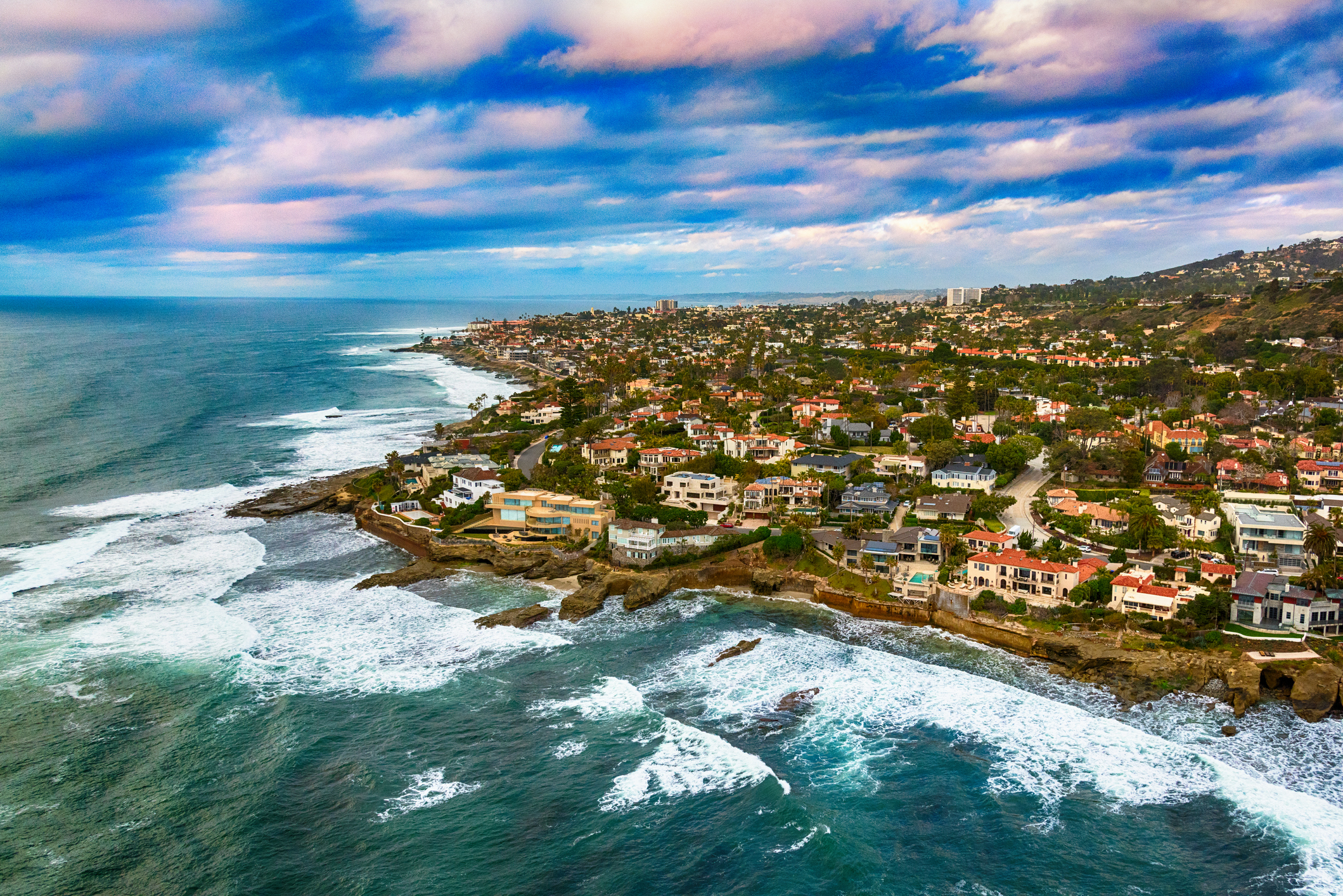
10. San Diego, California
- City population: 1,388,312
- Median household income: $105,780
- Average home price: $1,153,380
- Median home value: $923,900
- Premium to U.S. average: 113.2%
San Diego, with its miles of beaches and nearly ideal climate, is paradise for those who love the outdoors. Be it surfing, sailing, hiking, biking, golfing or just exploring Balboa Park, this city on the Pacific has something for everyone.
And for those who prefer more sedentary activities, San Diego offers a world-class zoo, museums, professional sports teams and a wide-ranging restaurant scene.
What's not to like?
Well, for one thing, San Diego has one of the most expensive housing markets in the U.S. At more than $1 million, the average home price is 113% greater than the national average.
Or consider it this way: San Diego's median home value comes to $923,900, or 77% higher than the U.S. median of $520,771. The city's median household income, however, is only 31% greater than the U.S. level. Renters feel the pinch, too, with the average apartment going for $3,222 a month vs the national average of $1,578.
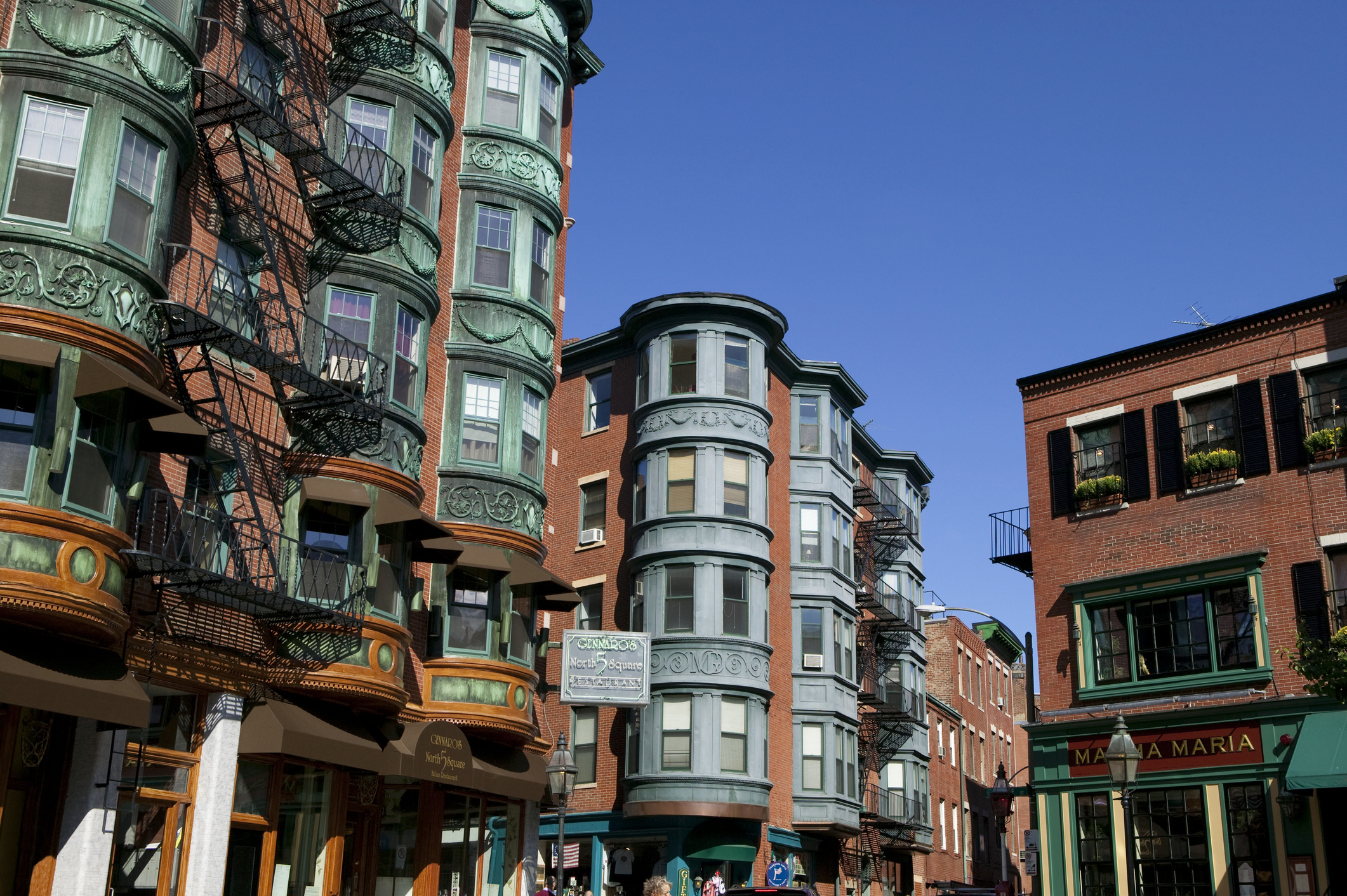
9. Boston, Massachusetts
- City population: 652,442
- Median household income: $96,931
- Average home price: $1,070,817
- Median home value: $703,600
- Premium to U.S. average: 126.0%
With its unparalleled collection of universities, hospitals, historical sites, and tech and biotech companies, it's easy to see why Boston is such an appealing place to live. And while there's no question the city's popularity comes at a high cost, it's not nearly as high as some East Coast cities that are often mentioned in the same breath as Boston.
After all, the large group of students, recent grads and young professionals living in the city require a level of affordability to get by while they're starting out. So while the city's overall living costs are almost 26% higher than the national average, that's a relative bargain compared to, say, New York City or San Francisco.
But as one of the most expensive housing markets in the U.S., putting down roots in Boston is another matter entirely. At nearly $1,070,817, average home prices are almost twice the U.S. average. Principal and interest payments on mortgages ($5,436 per month) are likewise a tad more than double what the rest of the nation shells out ($2,574 a month). Keeping the lights and heat on is a pricey proposition, too, with utilities running about 46% higher than the U.S. mean.
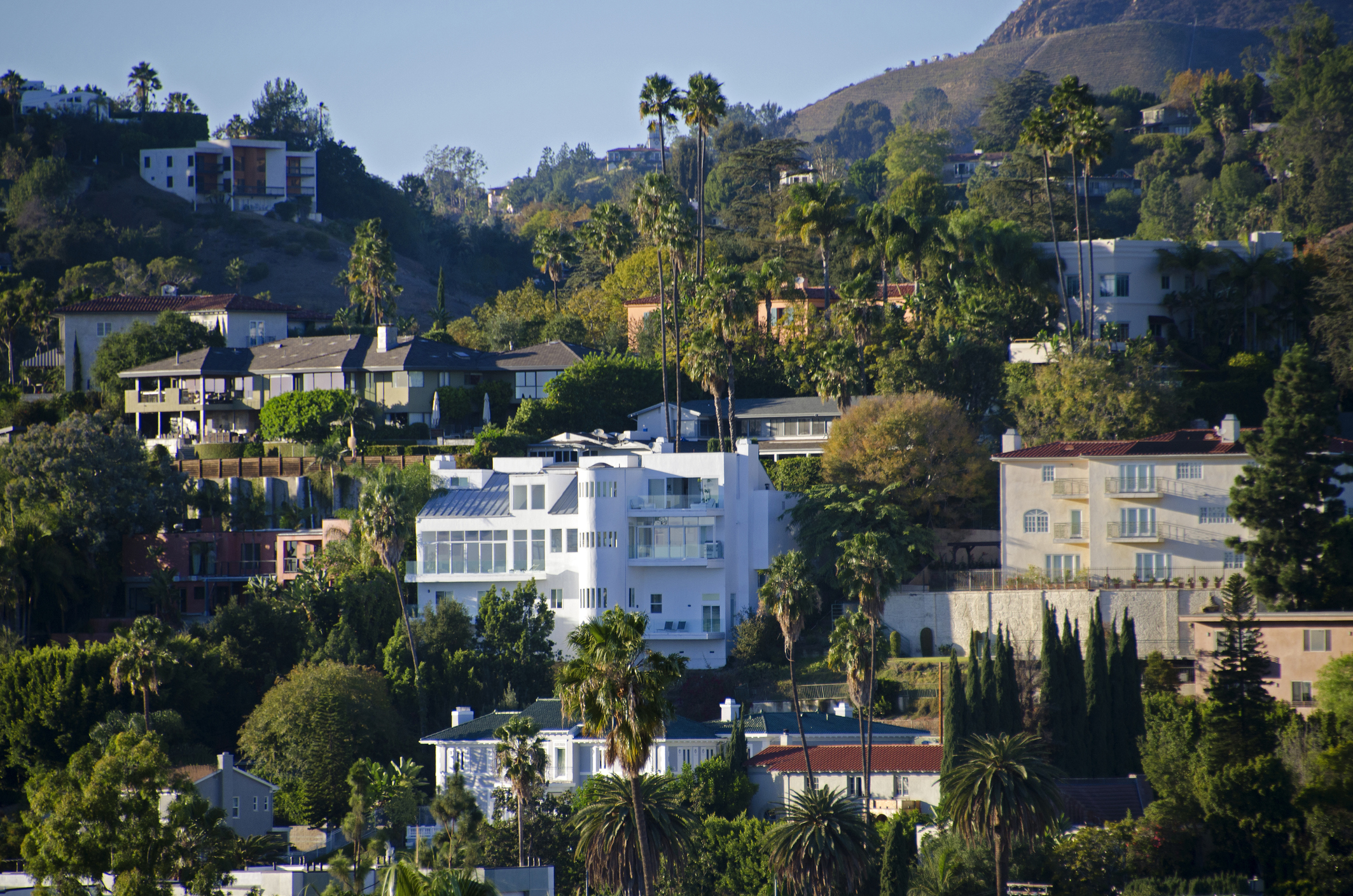
8. Los Angeles, California
- City population: 3,820,963
- Median household income: $79,701
- Average home price: $1,342,193
- Median home value: $919,900
- Premium to U.S. average: 133.1%
Few cities can top Los Angeles for excess and glamor, but most of its residents don't work in Hollywood or shop on Rodeo Drive. While high living expenses make L.A. one of the most expensive U.S. cities, median annual incomes are $909 lower than the national average.
Home prices — and overall housing costs — are the main culprits when it comes to L.A.'s comparative lack of affordability. As is the case with many other cities on this list, the area's average home price is skewed by the dwellings of so many high- and ultra-high net worth residents. Regardless, Los Angeles' median home value of $919,900 is plenty daunting for folks of more typical means. The city's average home price of $1.34 million offers a premium of 157.7% to the national average. LA home prices have increased more than 5.2% over the past three years, per the S&P CoreLogic Case-Shiller Los Angeles Home Price NSA Index.
As one would expect, renting is also rough on the wallet. Apartment rents, on average, are 88.8% more expensive than the U.S. average. That's a far cry from the big cities with the cheapest apartment rents. On the plus side, utilities are .7% less expensive in the City of Angels. That's 31.1% cheaper than San Francisco.
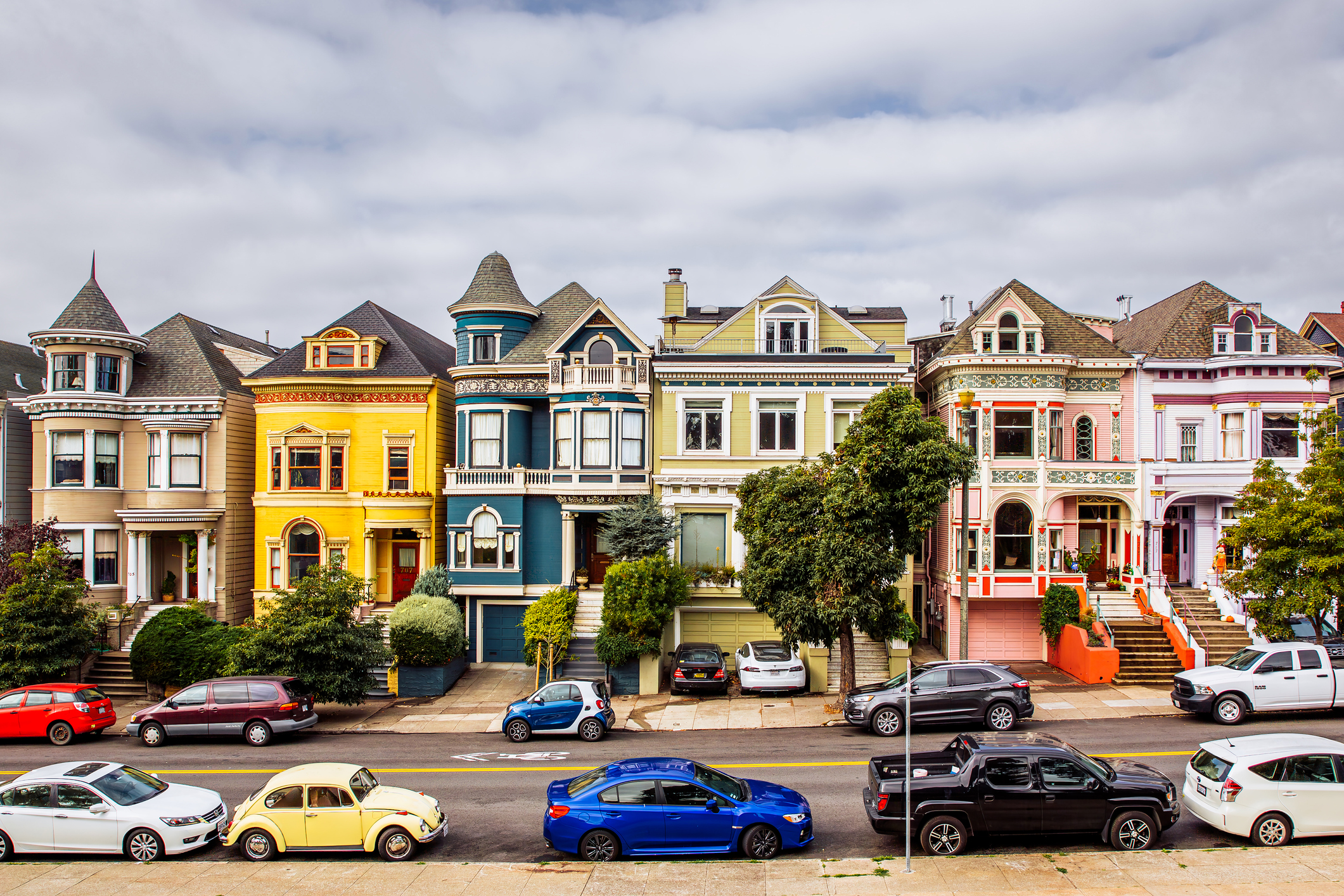
7. San Francisco, California
- City population: 1,535,341
- Median household income: $138,562
- Average home price: $1,369,694
- Median home value: $1,424,900
- Premium to U.S. average: 152%
Years of relentless growth driven by high-paid tech workers have given San Francisco one of the most expensive housing markets in the U.S. Even those residents who bring home fat paychecks can struggle to make ends meet.
Houses are famously expensive — an obstacle for aspiring homeowners. The average home price is a staggering $1.37 million in San Francisco, according to C2ER. The median home value is an astronomical $1,424,900 million.
Let's pause on that for a moment: Half of the city's homes cost more than $1.3 million.
At $6,634 a month, average principal and interest payments on mortgages are the seventh-highest in the U.S. — or almost 3 times what the typical American pays.
Renters don't fare much better. The average rent for an apartment in San Francisco is $3,862 a month. That's about 2.6 times the national average. Total housing costs, including rents, mortgages and related expenses, are more than 2.7 times the national average, too.
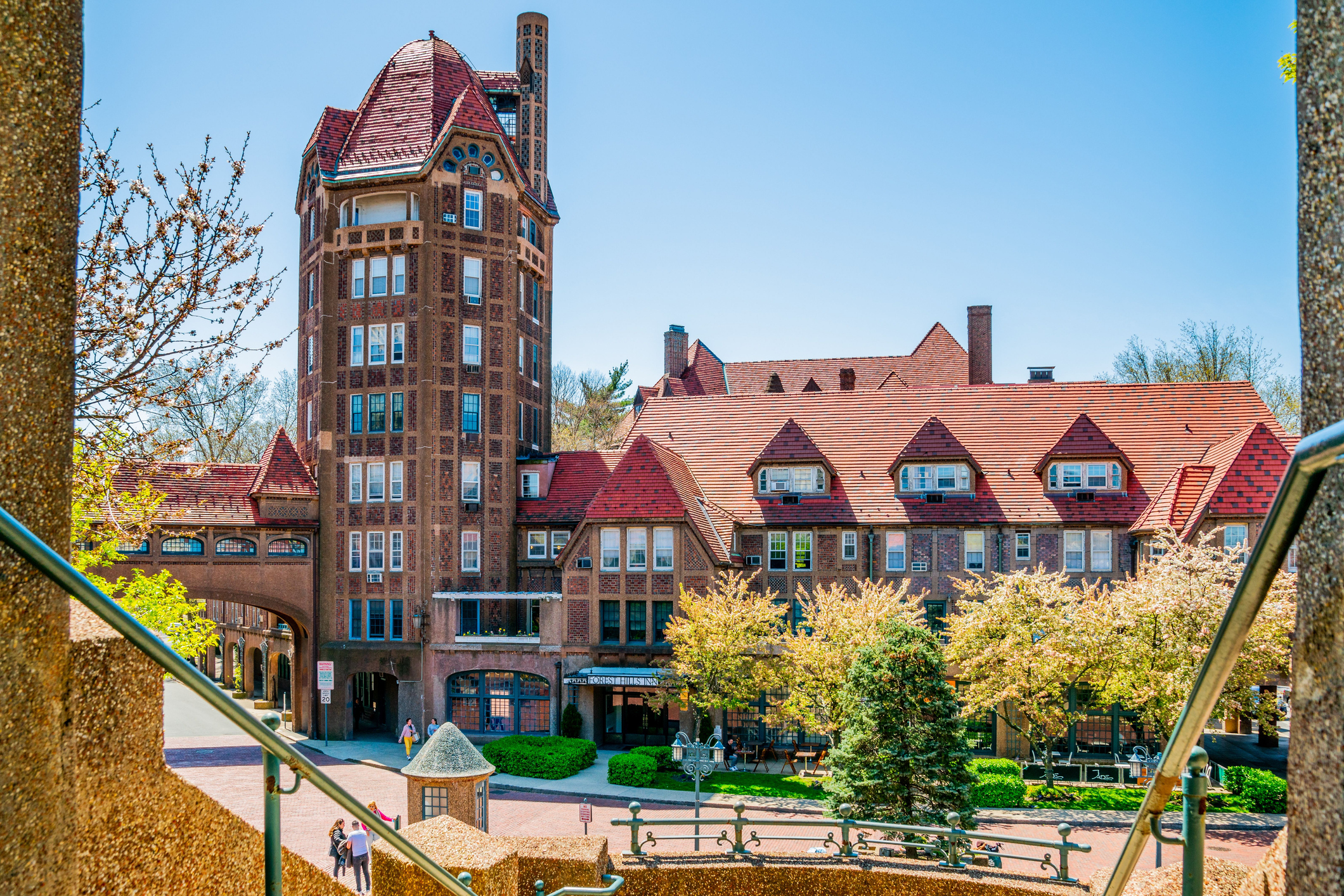
6. Queens, New York
- Borough population: 2,252,196
- Median household income: $81,929
- Average home price: $1,323,984
- Median home value: $692,500
- Premium to U.S. average: 157.5%
New Yorkers priced out of Manhattan used to move to Brooklyn. But now Brooklyn is no longer a bargain either, and that has folks flocking to Queens.
Not that it's much of a refuge. This NYC borough has one of the most expensive housing markets in the U.S.
Once best known for Archie Bunker and the New York Mets, Queens is becoming trendier by the day — and prices are following suit. The average home price is slightly more than $1.3 million, or more than twice the national average.
It should come as no surprise that housing-related costs are also 157.5% greater than the U.S. average. After all, the mean monthly apartment rent comes to $3,830 vs $1,578 a month nationally. And the average mortgage carries a principal and interest-rate payment of $6,795 per month vs $2,574 across the U.S.
Looking at it another way, although Queens' median household income is $1,319 greater than the national median, the borough's median home value of $692,500 is $187,800 less than its neighbor Brooklyn.

5. Orange County, California
- County population: 3,135,755
- Median household income: $110,042
- Average home price: $1,509,257
- Median home value: $961,400
- Premium to U.S. average: 166.6%
Although not properly a city itself, we include Orange County on this list because it comprises several large municipalities. Known as The O.C. for short, the county is synonymous with wealth — so much so that there was an entire TV series made about it in the 2000s.
Several large municipalities make up the county, which abuts Los Angeles to the southeast, including Anaheim, Santa Ana and Irvine. But it's the smaller, tonier enclaves such as Newport Beach (median home value: $2 million) that cement Orange County's reputation for sheltering some of Southern California's richest and most famous.
In fact, the average home price for all of Orange County sits at over $1.5 million according to C2ER. That makes it the fifth priciest market in the country — and easily one of the most expensive housing markets in the U.S.
At $3,178 a month, apartment rents are a bit more than twice the national average. All in all, housing in the O.C. costs 166.6% more than what the typical American pays. On the other side of the ledger, healthcare costs are 5.8% lower than the national average.
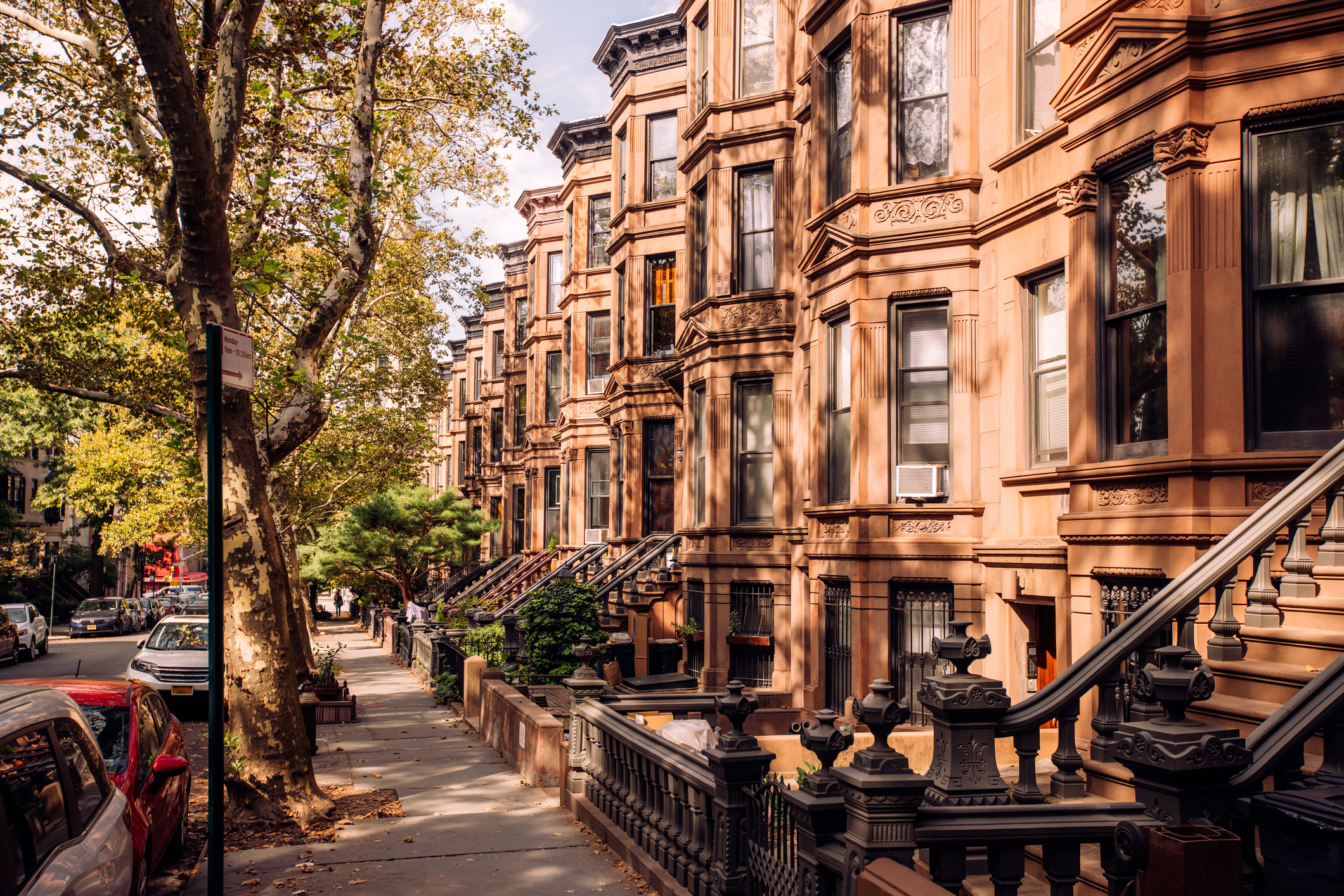
4. Brooklyn, New York
- Borough population: 2,561,225
- Median household income: $76,912
- Average home price: $1,395,489
- Median home value: $880,300
- Premium to U.S. average: 173.7%
Technically, Brooklyn is one of the five boroughs that make up New York City, but in recent decades it has emerged as something of a metropolis unto itself. Indeed, if Brooklyn were an independent city, its population would be on par with Chicago, the third-largest city in the nation.
Once upon a time, Brooklyn was considered a viable alternative for those who couldn't afford to live in Manhattan. Those days are long gone. Housing-related expenses including rents and mortgages are almost triple the national average.
And the average home price? Fuggedaboutit. At $1.395 million, Brooklyn homes cost almost three times the national average. Brooklyn is a sprawling borough, where the ultra-high-net-worth residents of, say, Brooklyn Heights, help skew its average home price upward. But its median home value of $880,300 — vs $520.771 U.S. — is shocking too.
And here's the kicker: Brooklyn's median household income is $3,698 lower than the U.S. median.

3. Honolulu, Hawaii
- City population: 341,753
- Median household income: $84,907
- Average home price: $1,644,173
- Median home value: $831,600
- Premium to U.S. average: 202.6%
To enjoy the perks of living in such a remote Pacific paradise, Honolulu residents pay more than they would on the mainland for pretty much everything — and it's not hard to understand why. Most goods sold in Hawaii must arrive either by boat or by plane, which jacks up the price considerably.
Honolulu's average home price is almost 3.2 times greater than the national average. The median home value of $831,600 is likewise brutal. Meanwhile, average monthly principal and interest payments on mortgages come to $7,859. That's 3.3 times the national average of $2,574.
Renters face a similar dilemma. The average apartment lease goes for $4,677 per month in Honolulu, vs a national average of $1,578.
And Honolulu's elevated living costs hardly end with housing prices. The city reports the second highest utility bills of all 265 urban areas surveyed by C2ER.
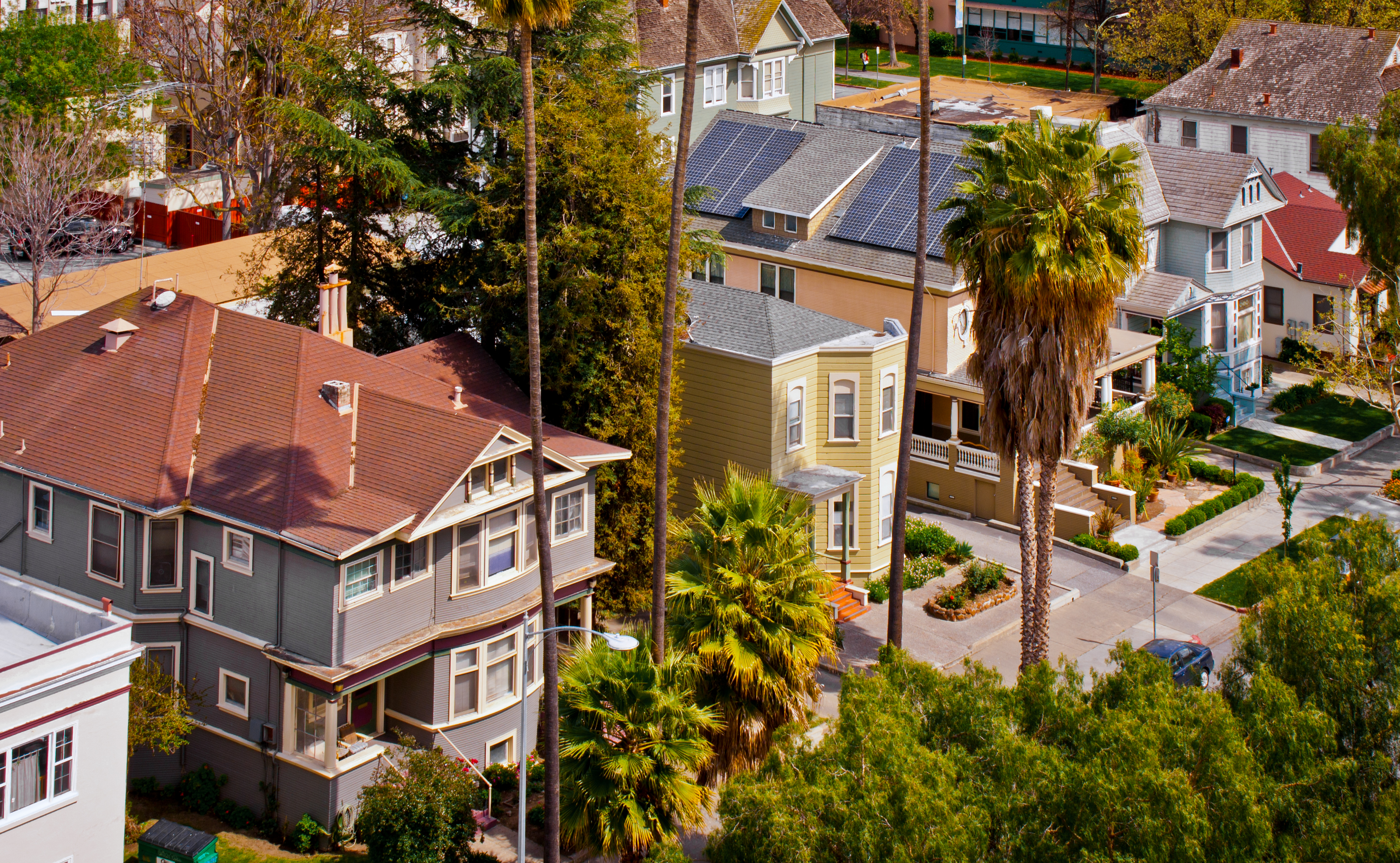
2. San Jose, California
- City population: 1,945,767
- Median household income: $153,202
- Average home price: $1,923,230
- Median home value: $1,393,400
- Premium to U.S. average: 234.9%
San Jose is at the epicenter of tech development in America and hosts major facilities for many companies including Hewlett Packard Enterprise, IBM, Lockheed Martin, Qualcomm and the North American headquarters of Samsung Semiconductor
The abundance of high-paying jobs is necessary if you want to live and work in the area. The typical household income in San Jose is $153,202 and that is twice the average of $80,610.
Housing costs are 234.9% higher than the national average and the mean price of a home is $1,923,230. That is 3.7 times what most people pay nationwide at $520,771. The cost of heating and cooling your home, as well as charging your EV, is in line with housing prices and is 52.3% higher than average. Although it is cheaper than neighboring San Francisco, where the costs are 58.8% above the norm.
The biggest line item contributing to San Jose's high cost of living? Not surprisingly, it's housing. Renters and homeowners pay a premium of 234.9% to the national average to keep roofs over their heads.

1. Manhattan, New York
- Borough population: 1,597,451
- Median household income: $101,078
- Average home price: $2,810,308
- Median home value: $1,010,800
- Premium to U.S. average: 399.7%
No place beats the center of the Big Apple when it comes to being the most expensive housing market in the U.S.
With space at a premium and location paramount, the average price of a home in Manhattan is $2,810,308, or 5.4 times higher than the national average. Heck, the average home price in Manhattan is 71% higher than what you find in Honolulu, and 46% greater than what San Jose has on offer.
True, the island borough's median home value comes to a somewhat less stunning $1,010,800, or $382,600 lower than San Jose. But average monthly principal and interest rate payments on mortgages stand at $14,424, which absolutely blows away every other city in the U.S. (San Jose comes in second at $10,012, while the national average is $2,574). Average rent in Manhattan comes to $5,701 a month, which is also by far and away the highest of any American city.
The bottom line? Manhattan residents spend more five times the national average for housing.
Get Kiplinger Today newsletter — free
Profit and prosper with the best of Kiplinger's advice on investing, taxes, retirement, personal finance and much more. Delivered daily. Enter your email in the box and click Sign Me Up.

Dan Burrows is Kiplinger's senior investing writer, having joined the august publication full time in 2016.
A long-time financial journalist, Dan is a veteran of MarketWatch, CBS MoneyWatch, SmartMoney, InvestorPlace, DailyFinance and other tier 1 national publications. He has written for The Wall Street Journal, Bloomberg and Consumer Reports and his stories have appeared in the New York Daily News, the San Jose Mercury News and Investor's Business Daily, among many other outlets. As a senior writer at AOL's DailyFinance, Dan reported market news from the floor of the New York Stock Exchange.
Once upon a time – before his days as a financial reporter and assistant financial editor at legendary fashion trade paper Women's Wear Daily – Dan worked for Spy magazine, scribbled away at Time Inc. and contributed to Maxim magazine back when lad mags were a thing. He's also written for Esquire magazine's Dubious Achievements Awards.
In his current role at Kiplinger, Dan writes about markets and macroeconomics.
Dan holds a bachelor's degree from Oberlin College and a master's degree from Columbia University.
Disclosure: Dan does not trade individual stocks or securities. He is eternally long the U.S equity market, primarily through tax-advantaged accounts.
- Donna LeValleyRetirement Writer
-
 6 Stunning Waterfront Homes for Sale Around the US
6 Stunning Waterfront Homes for Sale Around the USFrom private peninsulas to lakes, bayous and beyond, Kiplinger's "Listed" series brings you another selection of dream homes for sale on the waterfront.
By Charlotte Gorbold Published
-
 Six Reasons to Disinherit Someone and How to Do It
Six Reasons to Disinherit Someone and How to Do ItWhether you're navigating a second marriage, dealing with an estranged relative or leaving your assets to charity, there are reasons to disinherit someone. Here's how.
By Donna LeValley Published
-
 6 Luxury Waterfront Homes for Sale Around the US
6 Luxury Waterfront Homes for Sale Around the USFrom private peninsulas to lakes, bayous and beyond, Kiplinger's "Listed" series brings you another selection of dream homes for sale on the waterfront.
By Charlotte Gorbold Published
-
 Six Best Places to Live in Florida
Six Best Places to Live in FloridaPlaces to Live Florida offers a range of cities where you’re never far from the sound of lapping waves.
By Drew Limsky Published
-
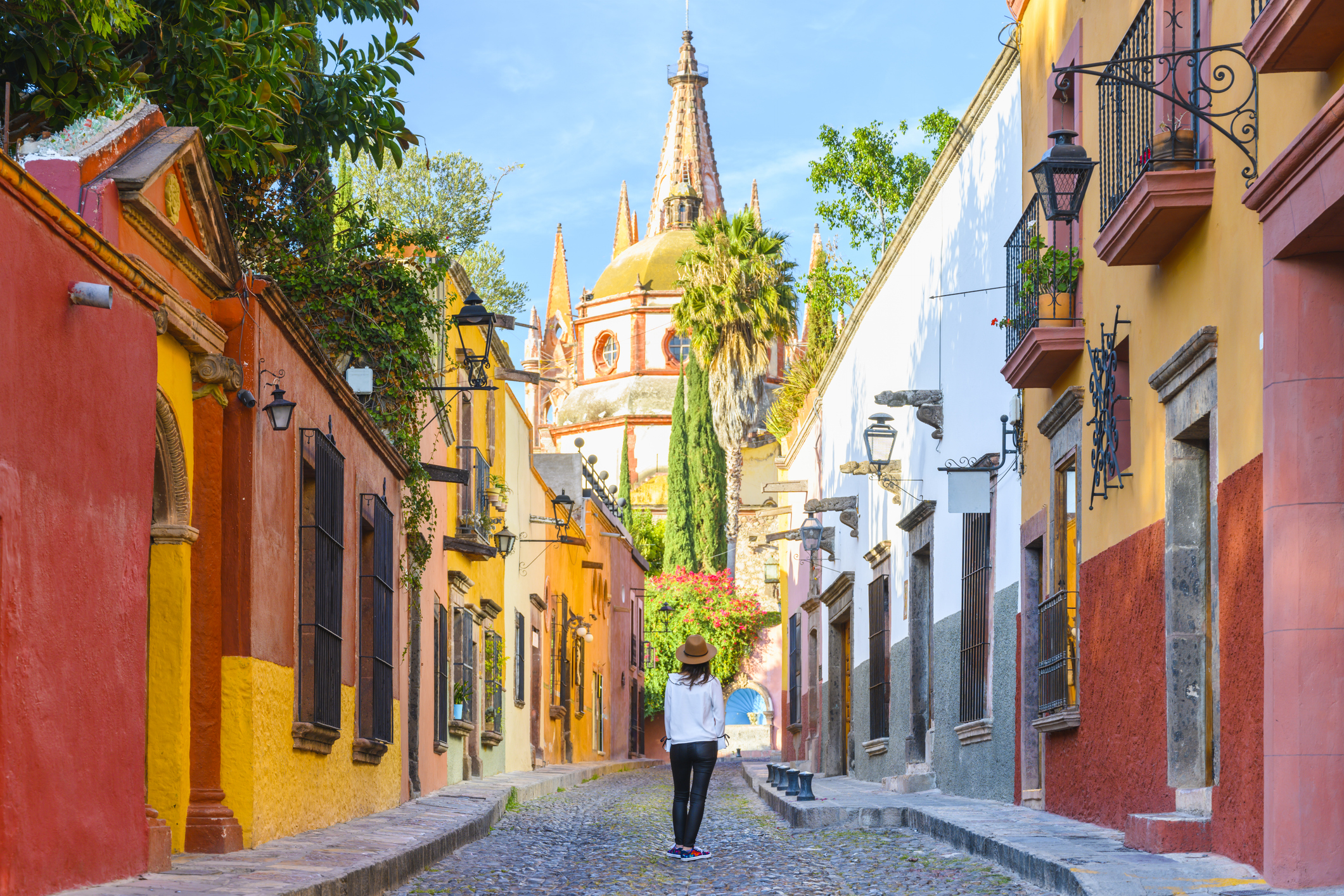 Retire in Mexico: Get a Lower Cost of Living Near the US
Retire in Mexico: Get a Lower Cost of Living Near the USMany older Americans retire in Mexico because of its laid-back lifestyle, beaches, and vibrant culture. Here’s the scoop on living in Mexico full-time.
By Brian O'Connell Published
-
 Five Great Places to Live in Wyoming
Five Great Places to Live in WyomingWhether you prefer the buzzy affluence of Jackson Hole, rodeo towns or mountain towns, Wyoming should be on any nature lover’s list.
By Drew Limsky Published
-
 Houses for Sale in Napa, California for Wine Lovers
Houses for Sale in Napa, California for Wine LoversThree gorgeous houses for sale in Napa, California, detailed as part of Kiplinger's "Listed" series.
By Alexandra Svokos Published
-
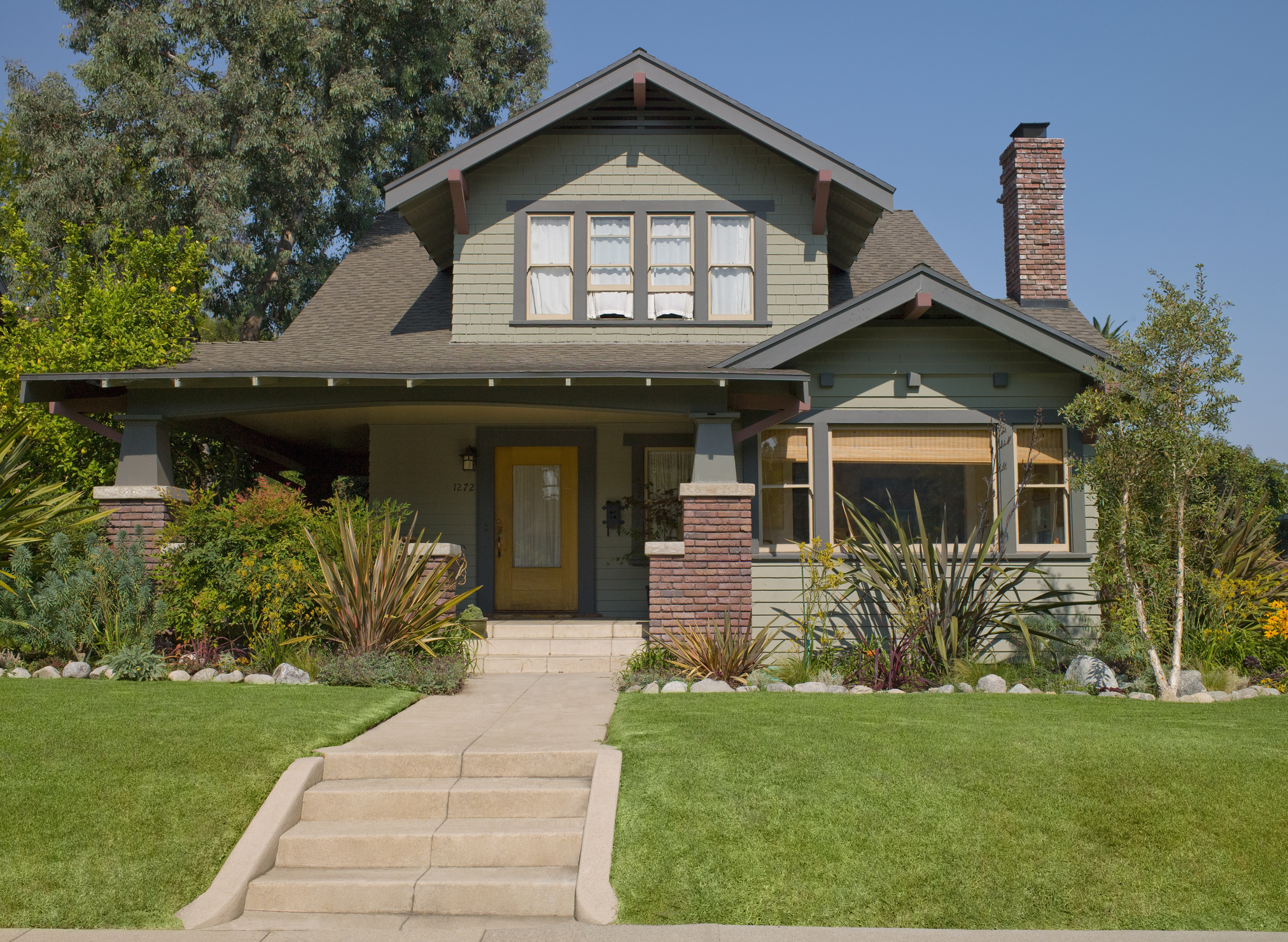 You May Not Want to Downsize in Retirement: Here's Why
You May Not Want to Downsize in Retirement: Here's WhyYour financial planner may urge you to downsize in retirement. Your kids may even pressure you. But be sure it's right for you before you make a move.
By Maurie Backman Published
-
 The True Cost of Owning a Second Home: What to Consider Before You Buy A Vacation Home
The True Cost of Owning a Second Home: What to Consider Before You Buy A Vacation HomeWhat to consider before buying a vacation home, including mortgages, insurance, taxes, and upkeep.
By Dori Zinn Published
-
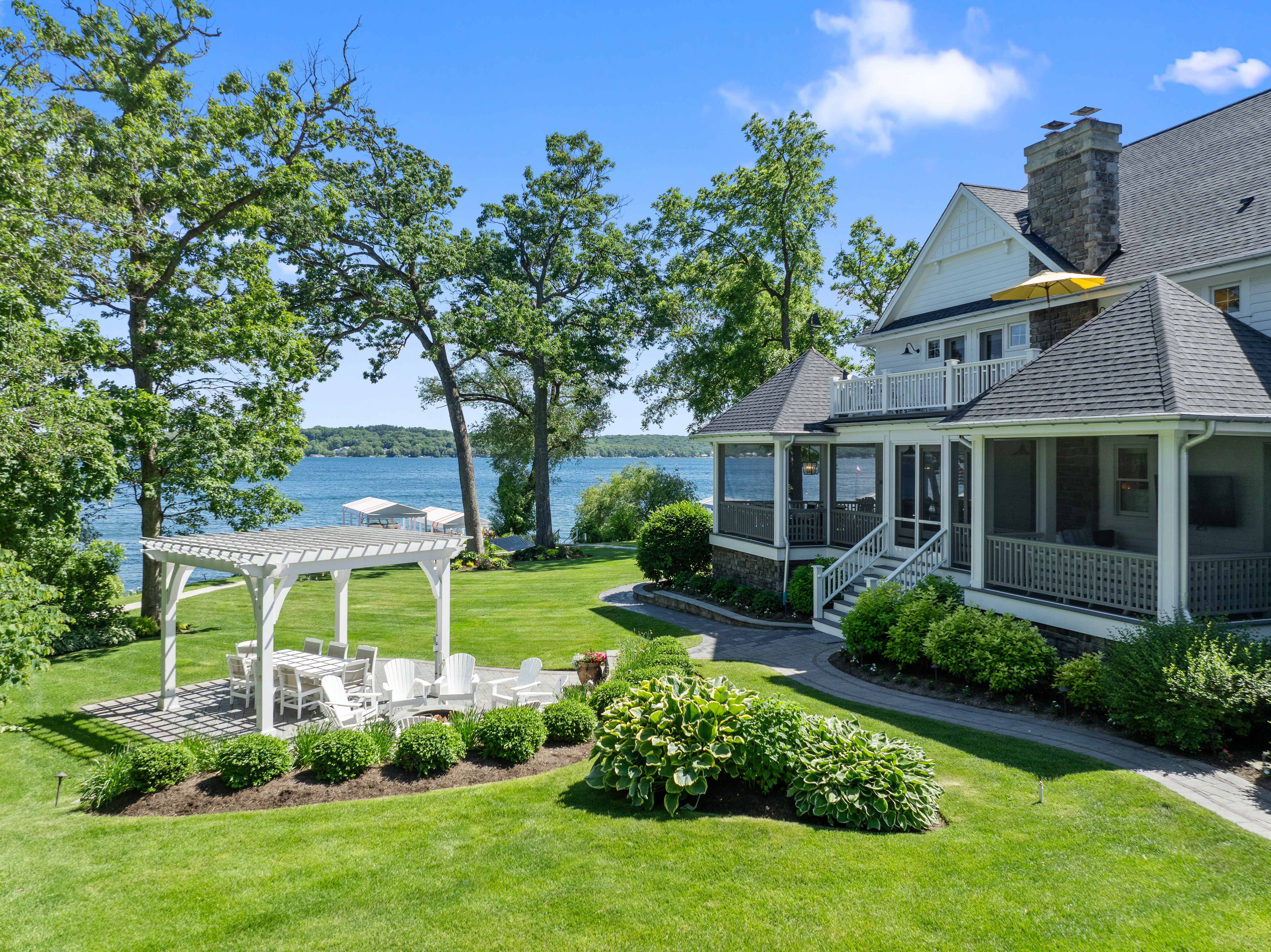 5 Gorgeous Lake Houses for Sale Around the US
5 Gorgeous Lake Houses for Sale Around the USKiplinger's "Listed" series brings you a collection of beautiful houses for sale on lakes.
By Alexandra Svokos Published
